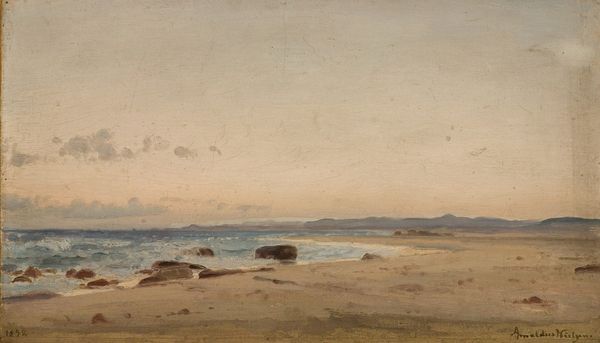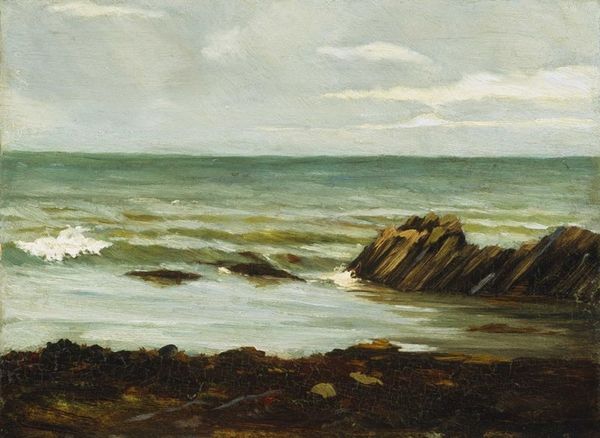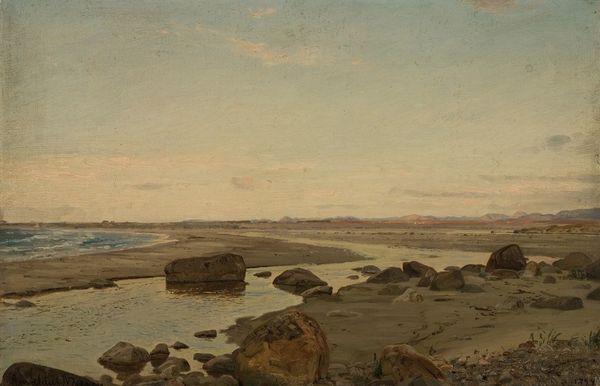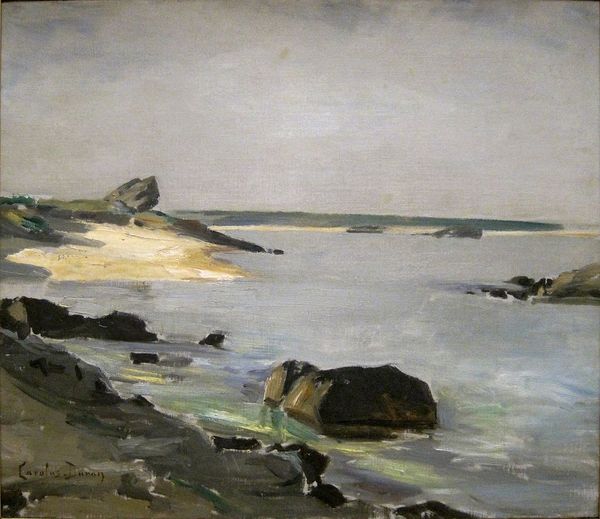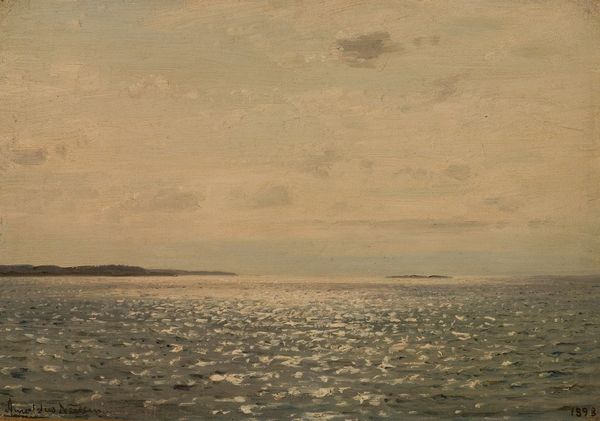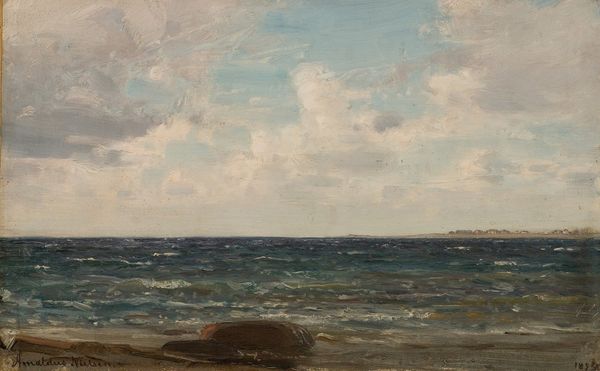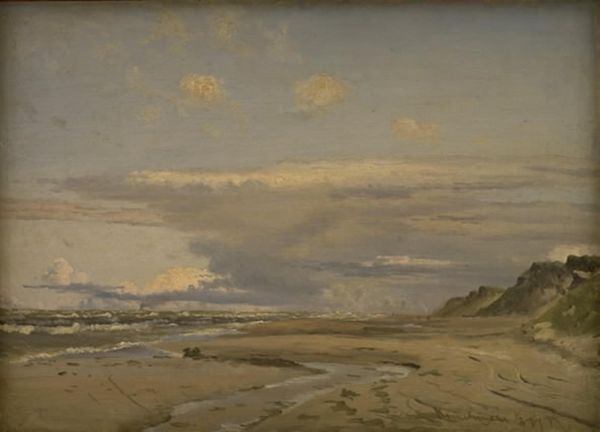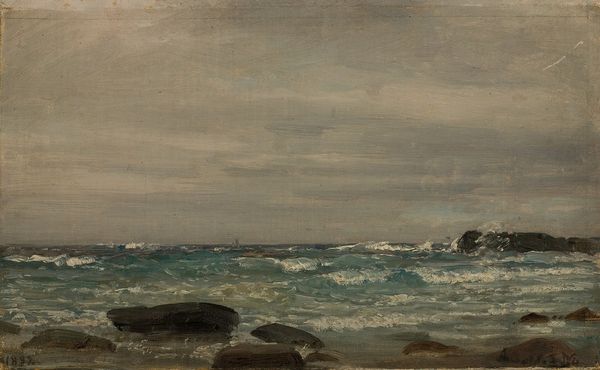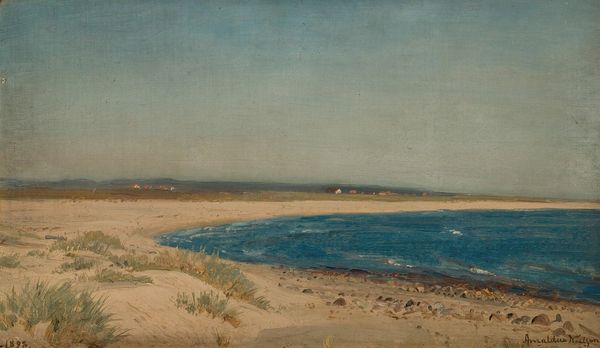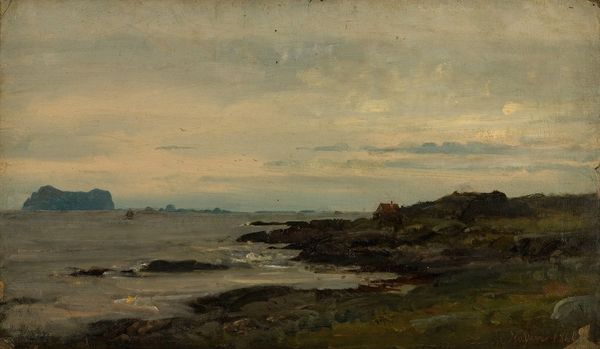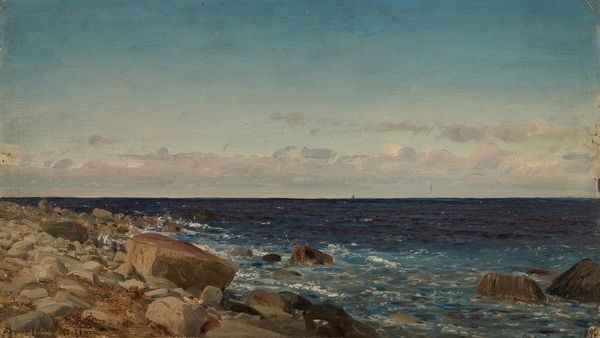
Copyright: Public Domain: Artvee
Amaldus Nielsen painted this vista of Jærsand, Norway, in oils, we think around 1896. Nielsen was part of a generation of painters who helped to define Norwegian identity. These artists turned away from grand historical subjects, preferring everyday scenes and landscapes. They believed that ordinary life held intrinsic value. Here, Nielsen captures the muted tones of the Nordic coast. The painting resonates with the rise of national romanticism in Norway during the late 19th century. This movement emphasized local traditions and landscapes, fostering a sense of collective identity. Nielsen's choice to depict Jærsand reflects a broader cultural trend. Artists and writers looked to the countryside for authentic expressions of Norwegian identity. They were responding to a period of significant social and political change. Norway was seeking greater autonomy from Sweden, which it was then in union with, and the arts played a vital role in imagining Norway as a distinct nation. To truly understand such a picture, we need to consider the social conditions that shaped it. Research into the history of Norwegian nationalism, and the institutional support for the arts at this time, can reveal a richer understanding of its cultural significance.
Comments
No comments
Be the first to comment and join the conversation on the ultimate creative platform.


